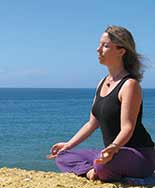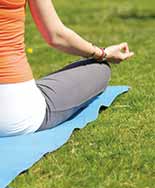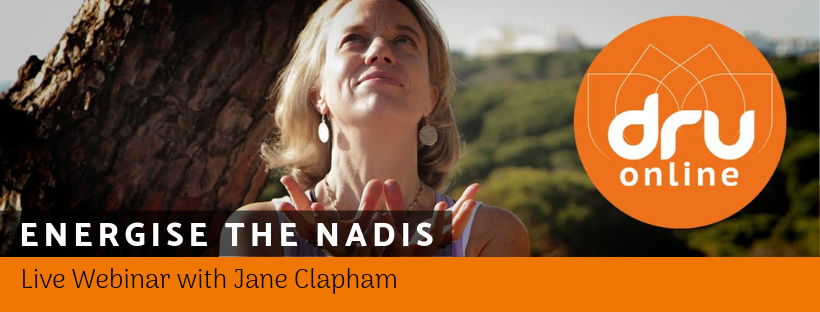So many yoga enthusiasts tell me about their challenges in doing a regular meditation or yoga practice. Despite our best intentions, many of us find that life can get in the way, or we get distracted, and our practice is the first thing to suffer. As an example, here’s a typical morning in my house...
My alarm goes off. It’s nice and early and I have great intentions of having a refreshing spiritual morning of yoga, meditation and a healthy Ayurvedic breakfast before walking mindfully to work. Fast forward 90 minutes, and I’m rushing to leave the house, a bit flustered and barely having time for a quick shower and bite of breakfast. What got in the way?
Well, a few WhatsApp messages, some essential Facebook posting and a bit of cleaning… and my meditation has faded into the dust of time. I’m sure this happens to you too from time to time!
So, here are my tips to manage the obstacles that prevent us getting to our practice. Enjoy!
1. Remind yourself of the benefits
Research shows that long term meditators are much healthier than non-meditators. One study quotes meditators having 80% less likely to get heart disease and 50% less cancer. For a summary of the health benefits, click here.
A regular practice has massive benefits for your mental health, chronic pain, insomnia and a host of other disorders. Keep reminding yourself of the reasons why you do your practice, for the sake of your health and relationships.
2. Work with your restless mind
According to my meditation teacher, Chris Barrington, most of us don’t meditate for the simple reason that we don’t want to. The mind resists sitting still. In the Bhagavad Gita Chapter 6, Krishna compares the restless mind to the wind – almost impossible to control. It constantly seeks distraction, and with our digital devices on hand, it can feel challenging to draw our attention back to our practice. So rather than letting the mind constantly distract you, give it a job to do! More active concentration techniques like counting the breath (pranayama) can give the restless thoughts something to focus on. And keep your phone out of the room you practise in!
3. Develop discipline
It’s not a very trendy concept, but developing discipline is key to making our practice work. Cultivating the strength of mind to choose our thoughts without distraction, is a noble quest. Discipline is a beautiful word in Sanskrit – anushasana. Patanjali uses it in the first sloka of the Yoga Sutras, “Now we begin the discipline of yoga. ‘Atha yoga anushasanam’.” The ancients understood the challenges of creating a disciplined mind. Patanjali placed asana (yoga postures), pranayama (breath control) and pratyahara (sense regulation) before concentration (dharana) and meditation (dhyana) in his eight limbs of yoga. We may find meditation difficult if we haven’t practiced the preceding steps. We must achieve stability of the body before we study the breath. Only then can we withdraw the senses at will, facilitating concentration and then meditation. This is why in Dru Meditation we place such an emphasis on preparing the body for sitting with movement, and the powerful practice of breath control.
4. Clear your subtle energy system
According to the ancient yogis, there are 72,000 subtle energy channels or nadis in the body which are described in the Hatha Yoga Pradipika. The major intersections of these energy channels are the marma points and chakras, which you may be familiar with from Ayurveda or yoga. Keeping these energy channels clear and flowing is essential for physical and mental health. Blocks in the nadis can result in an unfocussed mind, anxiety or eventually physical illnesses. Pranayama and mantra are traditional tools for keeping the nadis energised and flowing.
5. Pranayama (yoga of the breath) for a strong disciplined mind
Learning key pranayama practices that will help prepare for meditation is essential to help you develop a focussed mind. Breathing practices like nadi shodana (alternate nostril breathing) help to balance the energy in the right and left energy channels of the body (Pingala and Ida nadis). I highly recommend a daily pranayama practice before you sit for meditation. As in Dru Yoga we always look to energy block release movements to clear blocks, so before meditation, pranayama can help clear the mind so we can sit with willpower and determination. It’s worth taking the time – 5 minutes of pranayama can help you create more time in your day and resist distractions!
It’s really worth prioritising your pranayama and meditation practice as you will reap the benefits in every area of your life. Do let me know how you get on, and what works for you.

WEBINAR - Energise the Nadis
If you’d like to know more about Pranayama, I am leading a live webinar on Sunday 2nd June, which will teach you a progressive pranayama practice to clear the subtle energy channels (Nadis), counteract anxiety and develop a loving self- discipline.

































Comments